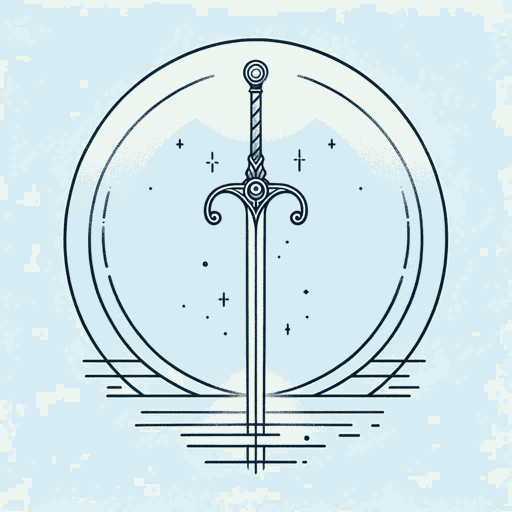92 pages • 3 hours read
Howard PyleThe Merry Adventures of Robin Hood
Fiction | Novel | YA | Published in 1883A modern alternative to SparkNotes and CliffsNotes, SuperSummary offers high-quality Study Guides with detailed chapter summaries and analysis of major themes, characters, and more. For select classroom titles, we also provide Teaching Guides with discussion and quiz questions to prompt student engagement.
Summary and Study Guide
Overview
The Merry Adventures of Robin Hood is a much-beloved adventure novel by Howard Pyle (1853-1911), published in 1883. Pyle, an American illustrator and children’s author, wove together several of the early ballads about the famed medieval outlaw Robin Hood and his companions, the Merry Men, in an episodic and entertaining plot aimed at young readers of the late nineteenth century. Written in a pseudo-archaic English actually modeled on Elizabethan-era English, the book reflects a colorful, late Romantic view of the Middle Ages. The Merry Adventures is widely credited with popularizing Robin Hood in modern times and with influencing subsequent depictions of the folk hero in film, art, and other media.
Plot Summary
Robin Hood is a spirited 18-year-old in 1100s England who is a skilled archer and swordsman. While on his way to an archery contest, he gets in an argument with several older men in a forest. As part of a bet, he shoots a deer which (unknown to him) belongs to the king and, even more seriously, shoots an arrow in retaliation at one of the foresters and kills him. Robin is condemned to the life of an outlaw. Over the next year, he hides in Sherwood Forest near Nottingham and gathers more than a hundred companions—all fellow outcasts from society—around him.
Robin and his “Merry Men”—including such colorful figures as Little John, his right-hand man, and Friar Tuck—spend their days playing at archery and cudgels, hunting and feasting, and looking for adventure. Robin becomes known as a benign highway robber, stealing excess money from the rich and powerful and giving to the poor and needy. Although always ready for a fight, Robin is equally ready to befriend his opponent. In this way, the Merry Men increase in size and become famous throughout England for their exploits, a situation which often leads them to don disguises when they venture beyond Sherwood so they will not be apprehended by the law. They find their chief adversary in the scheming and resentful Sheriff of Nottingham, whose repeated attempts to capture Robin Hood are unsuccessful.
At last, Robin Hood’s fame catches the attention of Queen Eleanor, who invites him to take part in an archery contest in London. There, he and his Merry Men carry the prize but earn the wrath of King Henry, who sends a search party after them to capture them. The Merry Men escape through various stratagems and, with the queen’s intercession, earn the king’s blessing to return home to Sherwood.
When the beloved and fun-loving King Richard the Lionhearted succeeds to the throne, he removes the curse of outlaw from Robin and the Merry Men and makes them part of the royal retinue. Robin becomes Robert, Earl of Huntingdon and fights alongside the king in the Crusade.
King Richard dies in the conflict and is succeeded by King John, who is less well-disposed toward Robin Hood, especially after he decides to return to Sherwood Forest and resume his former life. A skirmish between Robin and the king’s men results in the death of the Sheriff of Nottingham and throws Robin into a deep depression and fever.
Robin seeks the advice of his cousin, the Prioress of Kirklees, for help in curing his fever through bloodletting. Wanting Robin out of the way because of the danger he poses, she opens up a vein that leads straight to Robin’s heart. Little John rushes in to rescue Robin, but it is too late. After shooting one last arrow, Robin dies in Little John’s arms—but his exploits live on long after him.
Related Titles
By Howard Pyle
Featured Collections
Books on Justice & Injustice
View Collection
Contemporary Books on Social Justice
View Collection
Friendship
View Collection
Good & Evil
View Collection
Loyalty & Betrayal
View Collection
Medieval Literature / Middle Ages
View Collection
Poverty & Homelessness
View Collection
Required Reading Lists
View Collection



